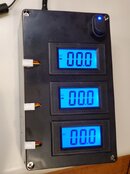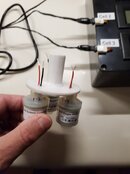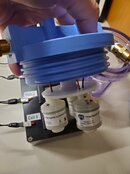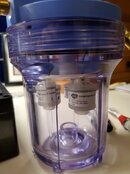I'm building a little cell-checker pressure pot. As planned, it gives me the option of either using a separate black box with three 0-200 mV voltmeters or, using a different cable, plugging into the rebreather head and reading voltages on my handset.
Looking for a (hopefully) easy source for both male and female 3 pin molex connectors. There are six million options and I'm having particular difficult with the male side, which has the little polarity tab. I'd rather not buy them 1000 at a time and I'm getting crosseyed trying to sort through the options. If they were already wired with pigtails, that'd be even better.
Any suggestions about convenient sources would be appreciated.
Looking for a (hopefully) easy source for both male and female 3 pin molex connectors. There are six million options and I'm having particular difficult with the male side, which has the little polarity tab. I'd rather not buy them 1000 at a time and I'm getting crosseyed trying to sort through the options. If they were already wired with pigtails, that'd be even better.
Any suggestions about convenient sources would be appreciated.







